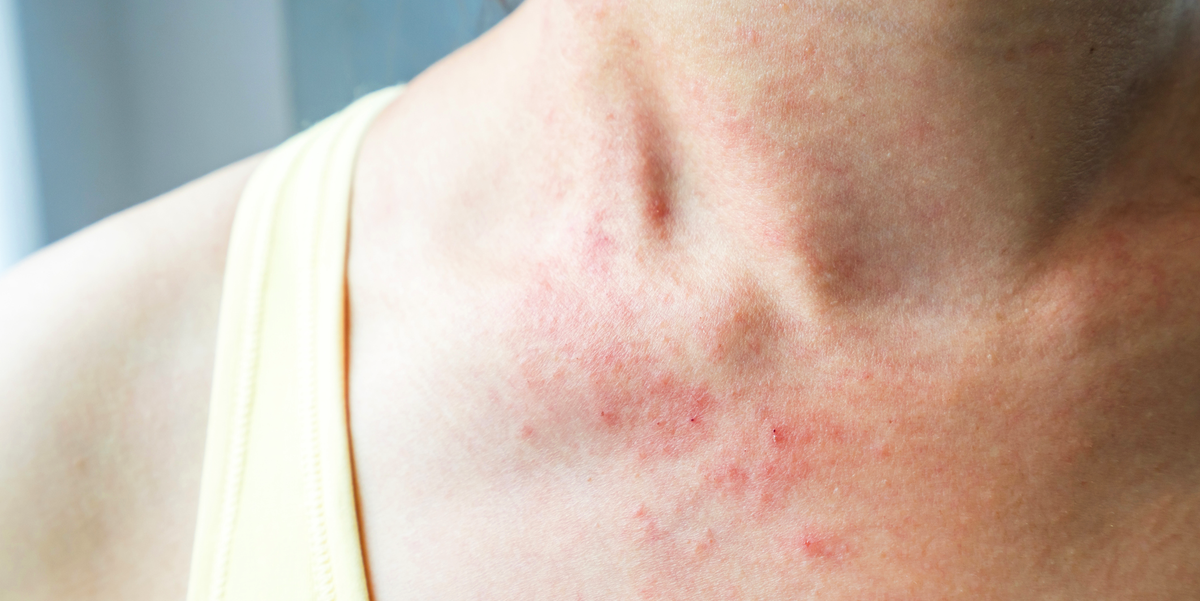18 Common Skin Rash Pictures - How to ID Skin Rash Symptoms - Prevention.com

Your skin is your body's largest organ, so it's not surprising that plenty can (and does) go wrong with it. Skin rashes are a common issue that can impact pretty much anyone, no matter your age, hygiene, or medical history.
"A rash is essentially inflammation in the skin that can be caused by either an external exposure or an internal factor," says Joshua Zeichner, M.D., director of cosmetic and clinical research in dermatology at Mount Sinai Hospital in New York City. Basically, a rash is your skin's way of telling you something is up, whether you've been exposed to an irritant or you have an underlying medical condition.
The unifying feature of all rashes is inflammation, Dr. Zeichner explains. That inflammation could be minor or could greatly impact the color, texture, or feeling of your skin—it all depends on the type and severity of your rash. (Note: Some of the chronic skin conditions listed below, like acne and rosacea, might not be considered rashes by all dermatologists, but their symptoms and treatments are similar enough to other rashes to include them.)
What causes skin rashes?
Again, when it comes to the root causes of rashes, they tend to fall into two main categories: outside-in and inside-out, explains Dr. Zeichner. A few distinct features make their identification and treatment unique.
Outside-in rashes, like contact dermatitis and ringworm, are due to direct exposure to an outside irritant, allergen, or organism. Irritants (substances like household cleaners and chemicals that can affect anyone) and allergens (substances like latex and poison ivy that only affect those with specific allergies) can both trigger rashes such as contact dermatitis. Organisms living on the skin, meanwhile, cause conditions like ringworm and scabies.
Inside-out rashes stem from genetics, allergies, or infections. Genetic rashes, like eczema or psoriasis, appear because your skin or immune system is triggered to produce them. Allergic rashes, like a drug rash, occur when you ingest an allergen, including certain foods or medications. And viral infections, like measles, can also result in rashes.
Many of these rashes can be resolved with proper treatment, except in the case of inside-out rashes caused by genetics. "Our bodies are genetically programmed to work a certain way, and while we can keep symptoms under control, we don't necessarily have a permanent cure," Dr. Zeichner explains.
How to identify common skin rashes and their symptoms
Size and location are the first things to notice when trying to identify a rash. "Something that's localized with distinct borders will typically be an outside-in job," Dr. Zeichner says, while inside-out ones "can lead to red, angry rashes throughout the entire body." The next clues to look for are the shape, color, and texture of the rash.
"If your over-the-counter products aren't working, you're suffering from a rash for a week or so, and it's not improving, you should touch base with a board-certified dermatologist," Dr. Zeichner says. "This is what we are trained to do, and treatment depends on proper diagnosis." Be sure to tell your doctor how long you've had the rash and any other symptoms you've been experiencing (such as a fever or difficulty breathing).
Ahead, you'll find pictures of common skin rashes, plus symptoms to lookout for. It's important to note that rashes can look different depending on your skin tone. Some conditions might not cause discoloration on darker skin so if you're unsure, see a dermatologist who can make the proper diagnosis.
This content is created and maintained by a third party, and imported onto this page to help users provide their email addresses. You may be able to find more information about this and similar content at piano.io
Comments
Post a Comment